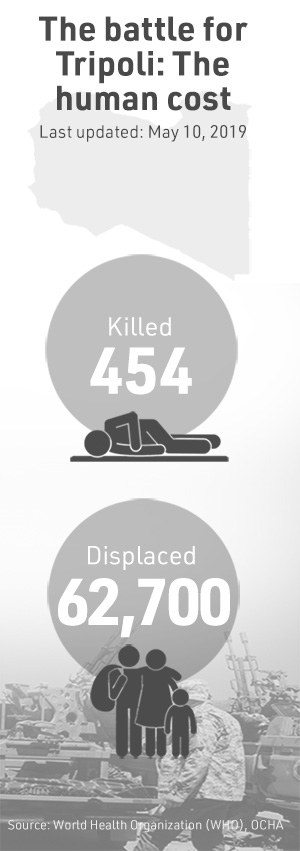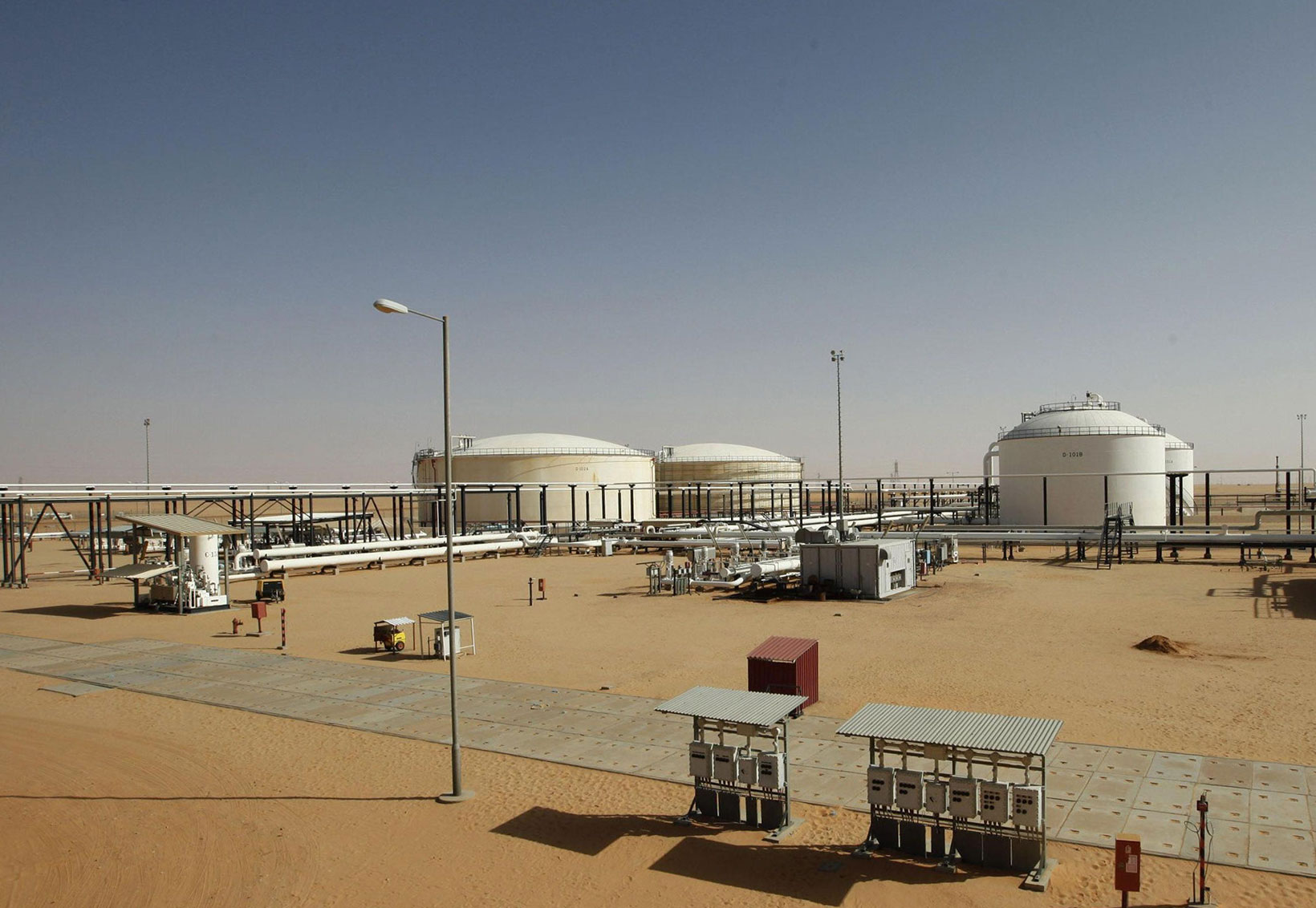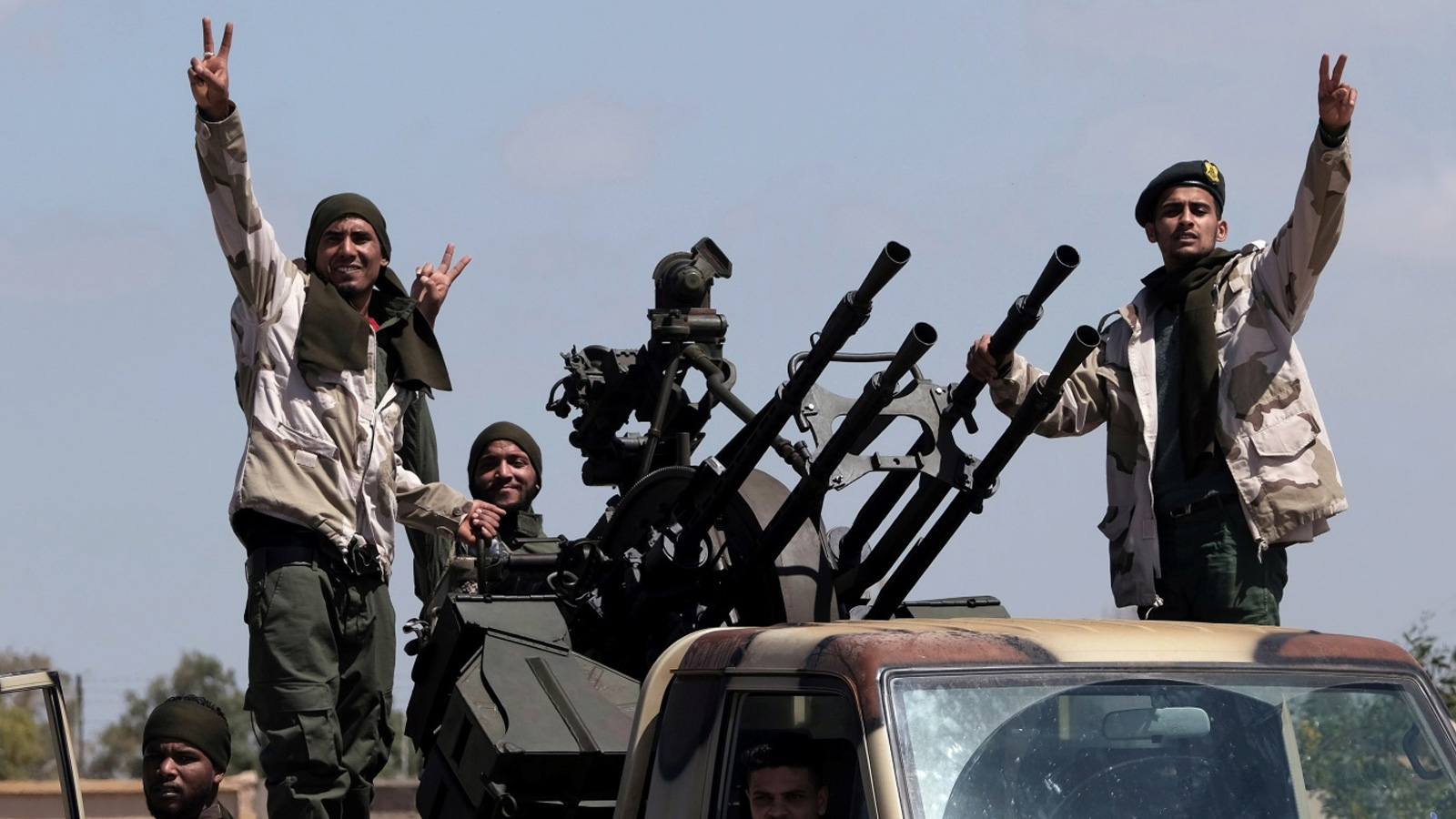On April 4, forces loyal to renegade military commander Khalifa Haftar launched a surprise attack on the Libyan capital, Tripoli, in an attempt to remove the UN-recognised Government of National Accord (GNA).
Claiming that he is fighting “terrorism” and trying to stabilise Libya, Haftar - who is backed by the Tobruk-based House of Representatives - has sought to defeat the militias that support the GNA, which is headed by Prime Minister Fayez al-Sarraj.
Since the toppling of long-time ruler Muammar Gaddafi in a NATO-backed uprising in 2011, a series of governments have failed to demobilise and reintegrate a number of armed groups that had risen to prominence during the revolution.
Haftar’s attack has failed to achieve any of its objectives thus far, with his eastern-based forces struggling to break through the GNA’s front lines along the capital’s southern outskirts.
Both sides have been fighting skirmishes within an area only a few kilometres wide despite interventions from the air force and heavy artilleries.
LIBYA’S OIL WEALTH
Libya has the largest oil reserves in Africa. The 48.36 billion barrels in its proven fields constitute 3.76 percent of world oil reserves, according to the 2018 estimates of the Organization of Arab Petroleum Exporting Countries (OAPEC).
Estimates from 2017 put Libya’s natural gas reserves at around 1.5 trillion cubic metres, with an annual production of 14.3 billion cubic metres. Most of this production is concentrated in the el-Wafa gas fields and the Sabrata marine platform.
Prior to the February 2011 revolution, Libya was producing 1.6 million barrels per day (bpd), which later slumped to fewer than 300,000bpd due to the armed conflict that has lead to several oil fields, installations and ports being taken out of state control and temporarily ceasing operations.
Oil output recovered to reach 1.2 million bpd in March 2019, however, production levels continue to be subject to disruptions, owing to recurring military campaigns and field changes.
All major oilfields, oil export terminals and refineries in the eastern and southern Libya are held by forces loyal to Haftar, while the facilities near Tripoli and the al-Zawiya district are held by the GNA and are operated by the National Oil Corporation.
UN-recognised Government of National Accord (GNA)
Haftar’s self-proclaimed Libyan National Army (LNA)
Other rebel groups
Oil and gas fields
International airports
Oil refineries
Oil ports
Tap on icons on the map for more information.
Only major locations are shown
UN-recognised Government of National Accord (GNA)
Haftar’s self-proclaimed Libyan National Army (LNA)
Other rebel groups
THE BATTLE FOR TRIPOLI
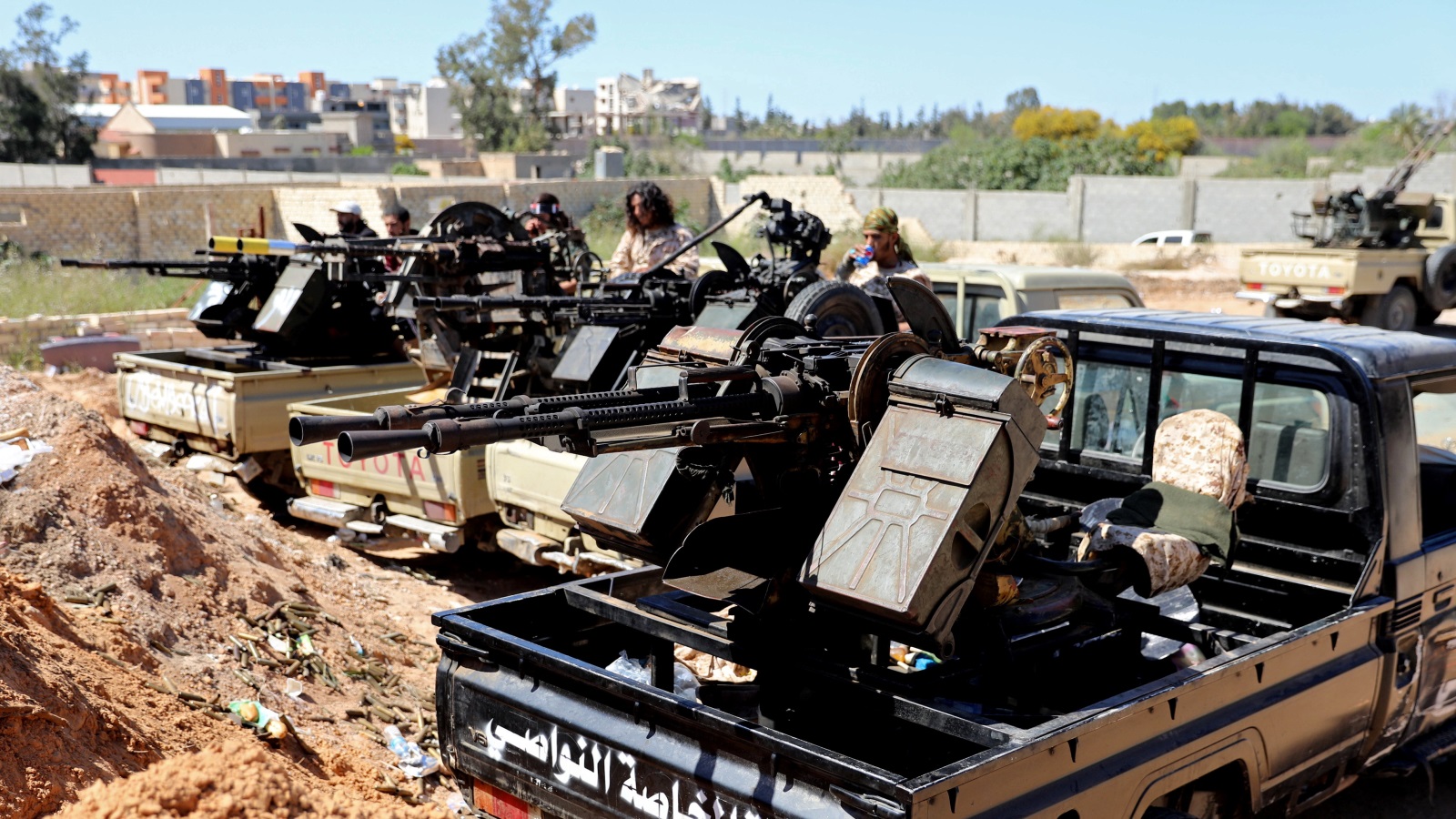
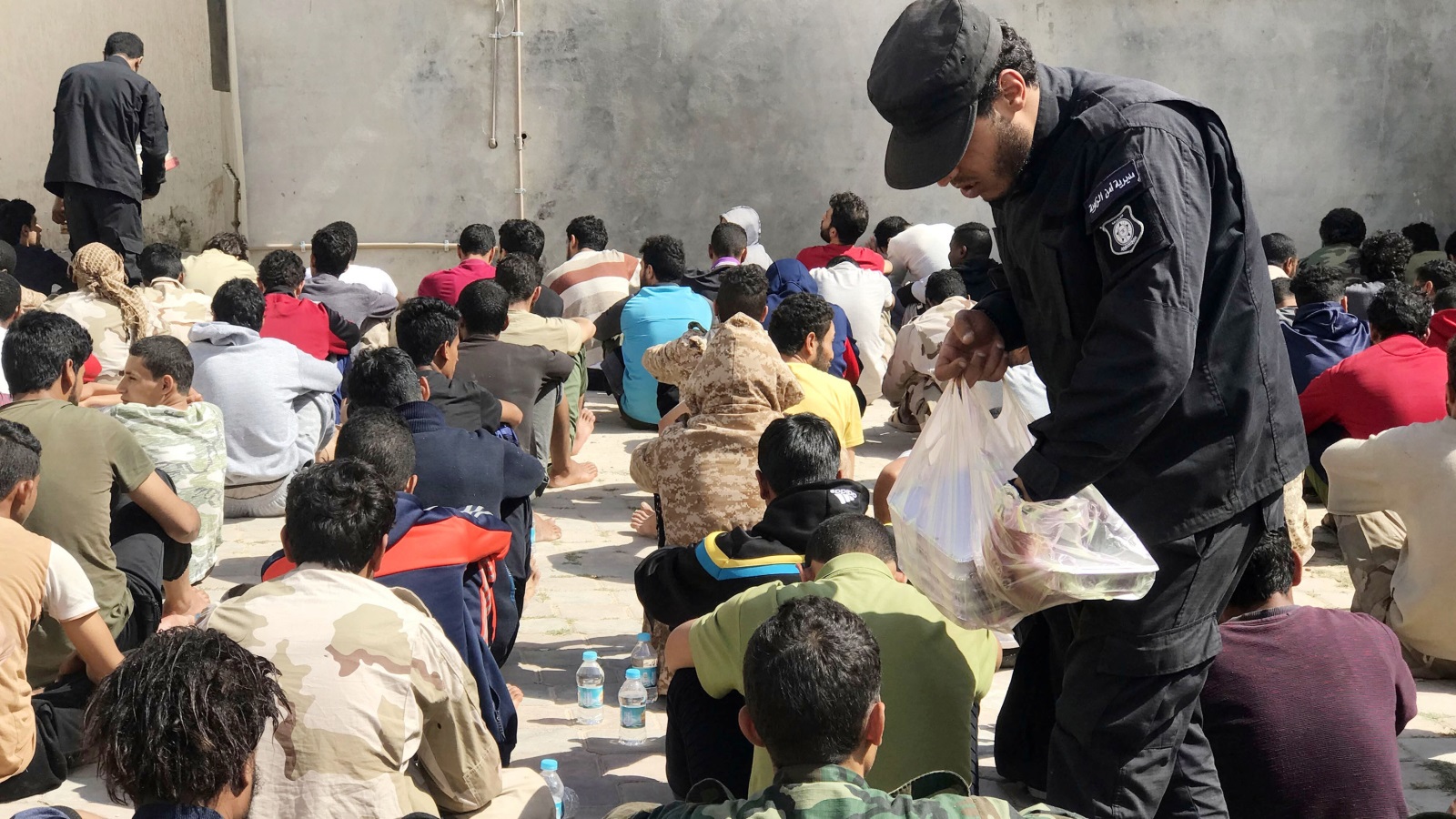
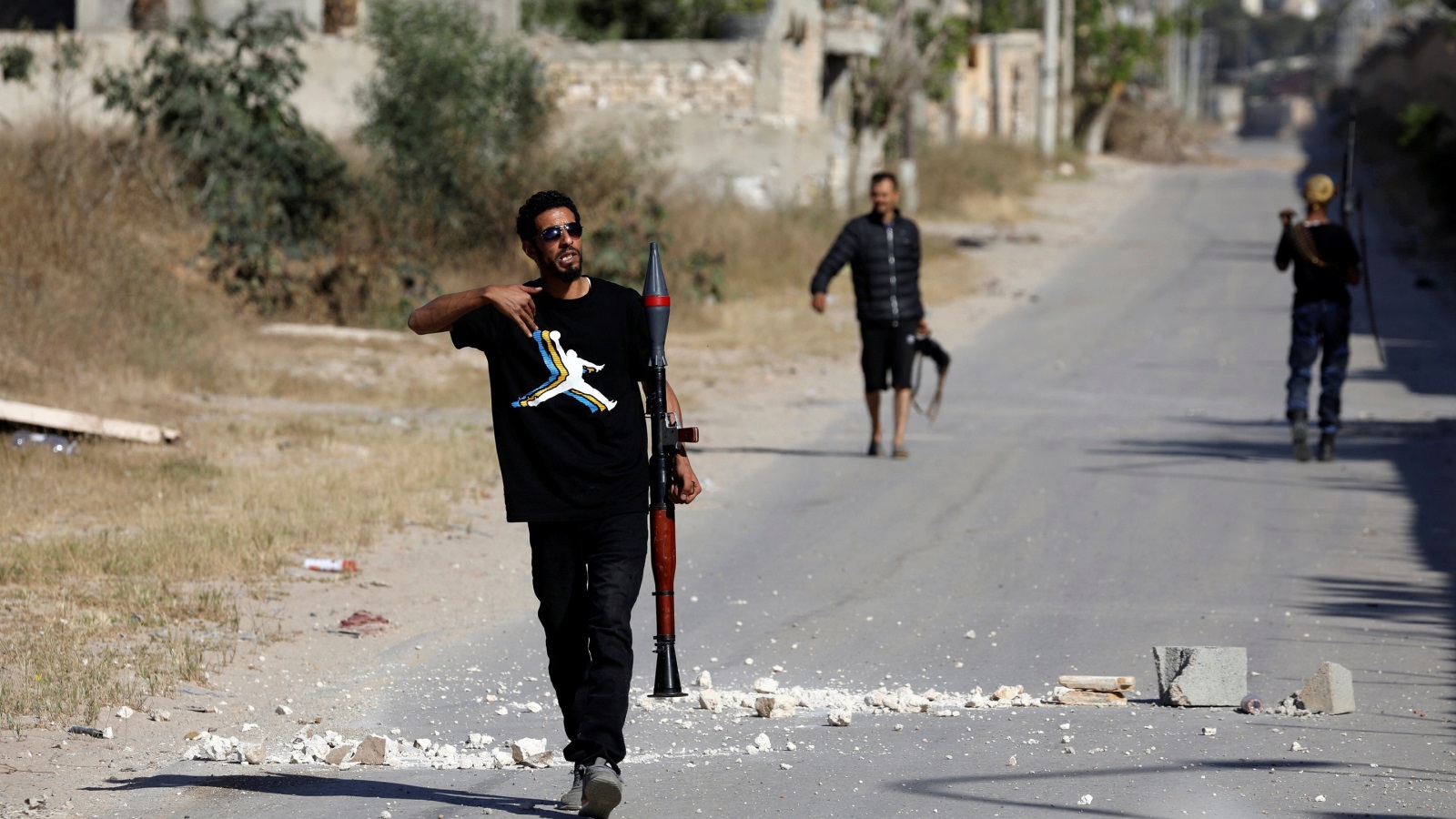
THE BATTLE COURSE
RIVAL FACTIONS
The forces fighting as part of Haftar’s self-proclaimed Libyan National Army were part of “Operation Dignity” which he launched in 2014. These forces are well-equipped and the UN has reported that they are being supplied at least in part by the United Arab Emirates and Egypt.
Pro-Haftar Entities
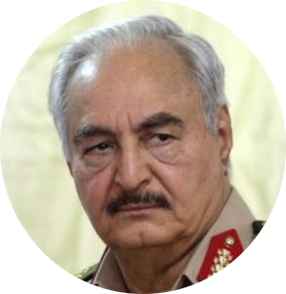
Tap to expand
Elements associated with Gaddafi
This comprises a number of military brigades and battalions that were once led by Muammar Gaddafi’s sons. They are currently being led by prominent military commanders loyal to Haftar and opposed to the February 17, 2011revolution that overthrew Gaddafi. Prominent among these is the Khamis Brigade and the Emhemmed Magariaf Battalion.
These forces are backed by armed tribesmen from Tarhouna, southeast of Tripoli. The Tarhouna fighters were part of the forces loyal to the GNA, but have since switched allegiance to Haftar.
106th Infantry Brigade
The 106th Infantry Brigade comprises battalions of armed fighters from cities in eastern and southern Libya. Some of the fighters are inspired by the conservative interpretations of Islamic law espoused by Rabie al-Madkhali.
The 106th Brigade is the largest military force under Haftar’s command; it is being led by Haftar’s sons and has a number of his family members among its ranks.
Western-based armed groups
A number of armed groups from the west of Tripoli formed approximately five years ago, hailing from cities including Sabrata, Sarman, Zintan and Gharyan. Most prominent among these is the Sabrata-based al-Wadi Battalion, followers of the Madkhali school of thought.
Eastern-based armed groups
Several groupings of fighters hail from eastern Libya, where the Madkhali school of thought predominates.
Upon the launching of Operation Dignity in 2014, Rabie al-Madkhali issued a fatwa calling on his adherents to join Haftar.
The “Sahawat”, or “the Awakening”, fighters come from Benghazi and have been supporters of Haftar since 2014.
The “Shock Troops” are another pro-Haftar grouping from Benghazi. Also followers of the Madkhali school of thought, these fighters have played a key role in regulating religious discourse in eastern Libya.
Major General Fawzi al-Mansouri, commander of the Ajdabiya Operations Room, is leading a grouping of fighters from Ajdabiya currently participating in the Tripoli offensive along the Ain Zara axis. His forces comprise both soldiers and armed civilians.
Southern-based armed groups
In the south of Libya, Haftar relies on alliances with a number of armed groups who have come together under the leadership of Masoud Jedi Slimani who also commands the 116th Battalion.
Chadian and Sudanese rebels
These armed groups had previously fought within the ranks of Haftar forces in Benghazi, Derna and the Oil Crescent.
The Tarhouna-based 9th Infantry Brigade
Previously known as the Tarhouna 22nd Infantry Brigade, this is a military formation loyal to Haftar that is currently engaged in fighting at the southern outskirts of Tripoli.
Forces Fighting alongside GNA Troops
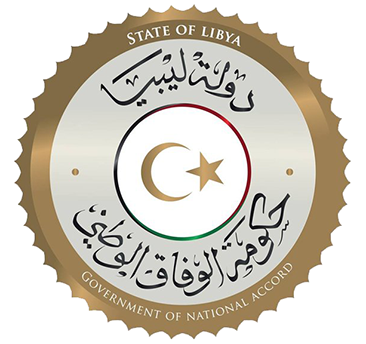
Tap to expand
The Tripoli Protection Force (TPF)
Based in Tripoli, the TPF is an alliance of major militias formed in December 2018. The alliance includes three of the four most powerful militias loyal to the GNA that dominate Tripoli, namely the Tripoli Revolutionaries Battalion, the al-Nawasi Battalion and the Abu Salim Central Security Forces.
Tripoli Revolutionaries Brigade (TRB)
The TRB is led by Haytham al-Tajouri and has played a major role in defending Tripoli during past assaults.
Al-Nawasi Battalion
Also known as the 8th Force, this battalion is led by Mustafa Gadour. It controls the Souq al-Jumaa district (east of Tripoli), where Mitiga airport is located. Al-Nawasi is linked to the GNA’s interior ministry and is charged with protecting public property.
Abu Salim Central Security Forces
Also known as the Abu Salim Battalion, the Ghnewa Forces, or the Joint Deterrence and Rapid Intervention Forces.
These forces are led by Abdul Ghani al-Kakli, whose nickname is Ghnewa. The force controls the Abu Salim neighbourhood, one of Tripoli’s largest suburbs, and has also played a large part in defending Tripoli from past assaults.
Bab Tajoura Brigade
One of the smaller militias, the Bab Tajoura Brigade is based out of the Souq Al-Jumaa district east of Tripoli.
Special Deterrence Forces
One of the capital’s four main militias, Abd al-Rauf Kara’s Special Deterrence Force (SDF, also known as RADA) nominally falls under the authority of the GNA’s interior ministry. The group was initially tasked with combating crime and drug trafficking, but has seen its mandate expanded to defending the GNA. In May 2018, the Presidential Council ordered the SDF dissolved and replaced by the Deterrence Anti-Organized Crime and Terrorism Apparatus. However, the SDF remains operational to this day.
Infantry Battalion 301
Battalion 301 hails from Misrata originally, where it was part of the Halbous Brigade, but has taken up position in southwestern Tripoli. It has in the past fended off attacks by rival militias trying to unseat the four most powerful Tripoli militias.
Infantry Brigade 33
Also known as the Bagara Battalion, this group originated in Tajoura east of Tripoli and is led by Bashir Khalfallah (“Bashir al-Bagara” or “the cow”). In January 2018, the battalion was ordered to disband after attacking Mitiga airbase to try to free some Tajoura fighters held there. However, it remained operational and has recently joined the ranks of armed groups allied with the GNA.
The Halbous Brigade
This brigade was founded in Misrata by Mohammed al-Halbous during the revolution to overthrow Gaddafi in 2011. Initially called “the Black Battalion”, the group was renamed after its founder when he was killed by Gaddafi loyalists in Misrata that same year. The brigade controls the Qasr bin Ghashir district where the presidential palace and Tripoli’s international airport are located.
Osama al-Juwaili’s forces
A former military commander, Osama al-Juwaili served as defence minister under the government of interim Prime Minister Abdurrahman el-Keib in 2011-2012. Al-Juwaili was appointed commander of the joint operations room by al-Sarraj in April 2019 and has been tasked with overseeing military operations against Haftar’s forces.
Al-Mahgoub Brigade
This armed group was founded in Misrata in March 2011 by Abdel Baset al-Mahgoub who was later killed during fighting with Gaddafi’s forces in June 2011. The brigade, which is made up of 16 battalions, is believed to have played a pivotal role in the 2016 liberation of Sirte from ISIL.
Human cost
